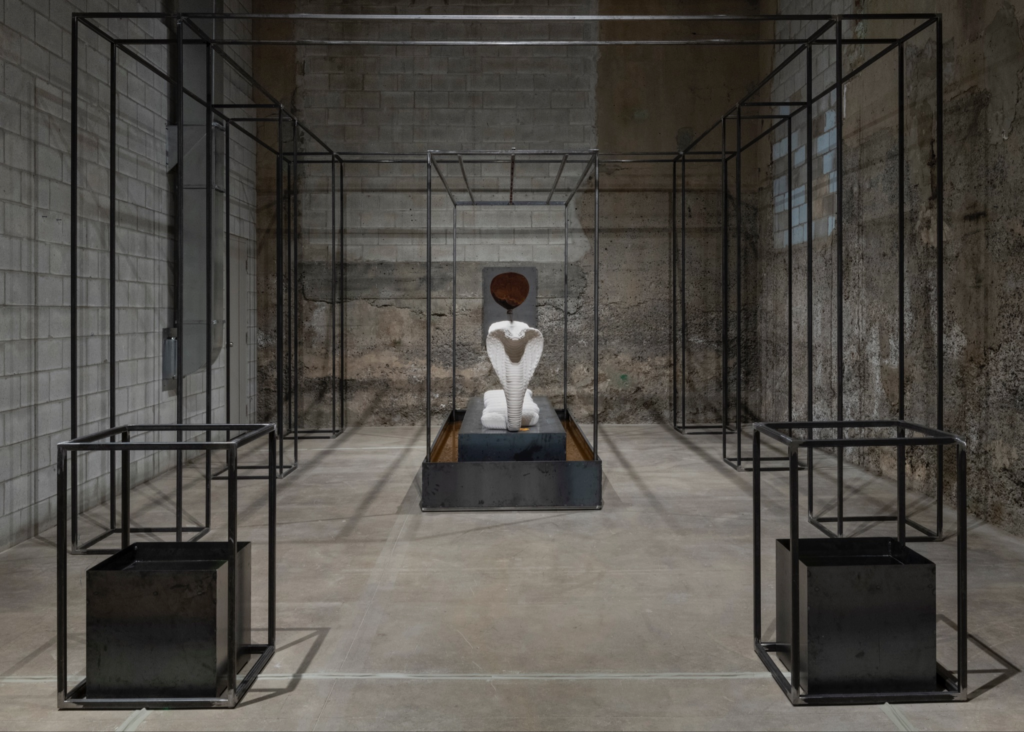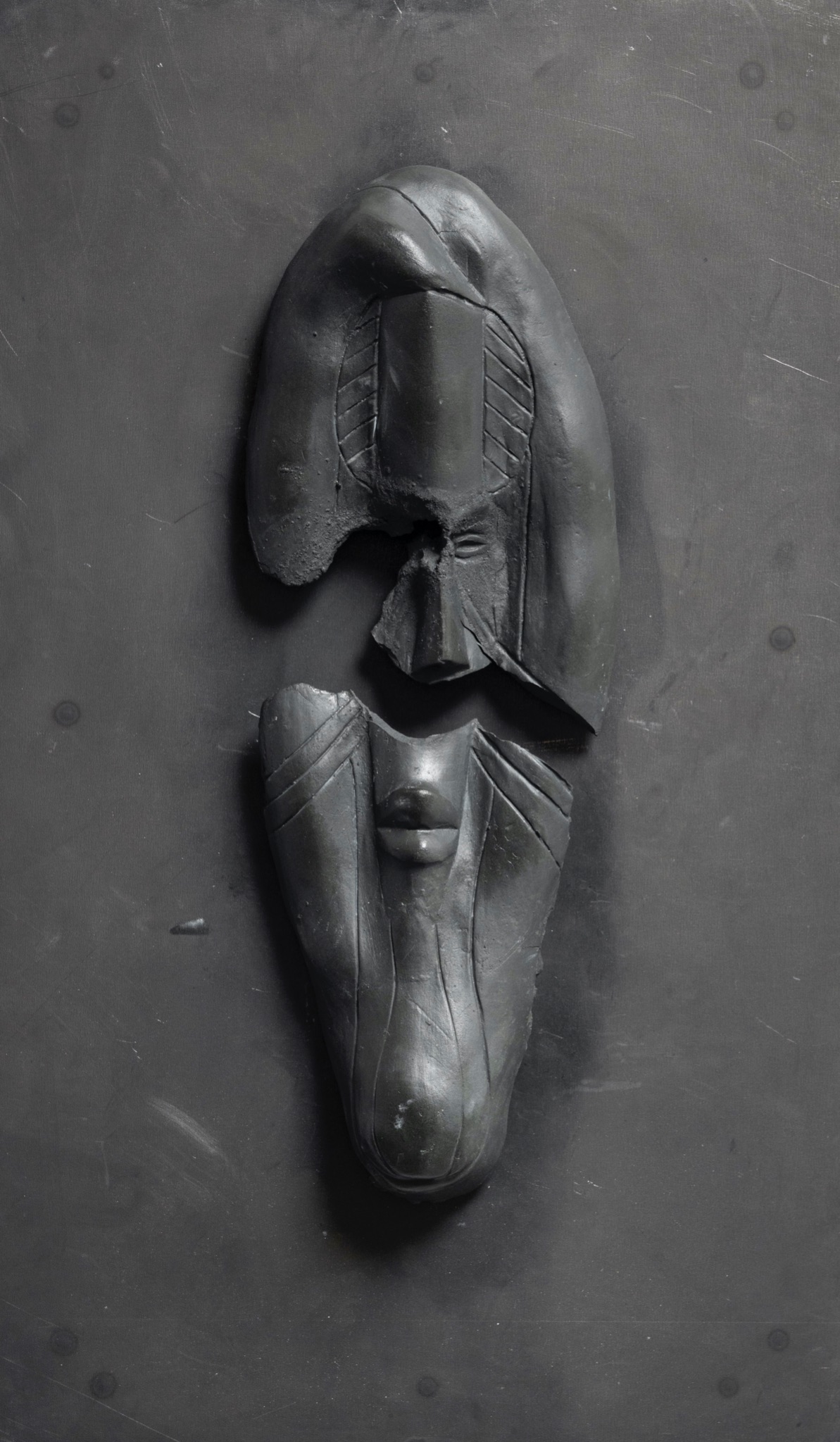Azza El Siddique’s Poetic Fragments of Egyptian and Nubian Culture


To enter Azza El Siddique’s exhibit that which trembles wavers at Bradley Ertaskiran Gallery you must move through the airy first-floor gallery space, head down two flights of stairs, and, depending on your height, duck down into the narrow cement hallway that serves as the entrance to the Bunker. El Siddique’s exhibit is the artist’s inaugural show with the gallery, and it was adeptly curated for the lower-level exhibition space. Her work is a way to simultaneously examine the weathering and legacy of Egyptian and Nubian culture, therefore housing her large-scale installation as well as her sculptures within a deeper space with sturdy yet abraded walls seems fitting.

The hallway leading to the larger exhibition space is lined with small sculptures of African masks that El Siddique re-cast, yet I moved past them too quickly at first, drawn to the main space by a pleasant aroma, which I later found out was sandalwood enshrouding the room through heat-activated chambers. The scent was first used by ancient Egyptians in the entombing process, and I learned Siddique has a personal connection to it through her research into Sudanese perfumery. After rounding the corner, and emerging into the main space, my gaze was immediately drawn to an immense installation of metal plinths arranged as a minimalist reimagining of an Egyptian shrine. Among these are square metal blocks filled with water as if they were devotional pools. Intensifying all of this is a large, surrealistic two-headed porcelain snake sculpture situated in the center and framed by its own plinths, which are slowly eroding. Water droplets fall from them onto the snake’s back, the chemical reaction creating viscous orange and rust-colored puddles which then filter into a pool beneath. The monumentality and power of the installation are in direct contrast with the smaller, slower motion of the drips, but without causing a tension. El Siddique’s work instead becomes contemplative and poignant.

![]()
While the installation is an important and driving force of the exhibit, I found the artist’s smaller sculptural work to be the most compelling, such as the re-cast African masks hung at the entrance to the exhibit. I had to duck under the piping to get to either side of the hallway, requiring me to look even closer at these small masks which were broken in different sections. Made of steel, they represent elongated faces and are comprised of shapes that recall fossils, scarabs, and ears, while still having defined lips, eyes, and noses.


Especially captivating are three urns exhibited, each resting on an individual stand affixed to the wall, which has a unique aged stucco-like texturing. The centers of the urns are split apart like a bodily gash. Similar to the masks, the urns can be viewed as objects of decay and fragility, if it were not for the rest of the surface being smooth and weighty. Specific to the urns is the inclusion of a metal chain that hangs from each. There is an elegant push-pull of these objects, and in their fragmentation they become signifiers of cultural erosion – objects from Egypt and Africa were rapidly acquired and appropriated by the West going back centuries and thereby informing our current understanding. El Siddique’s works are delicate symbols of what has been preserved, why and how, and just as importantly, what is no more. She strikes a beautiful balance by breaking things apart, and the exhibition title, that which trembles wavers, is a poetic summation of the unceasing rumble of change, but also the solace and possibility in what remains.
that which trembles wavers is on view at Bradley Ertaskiran Gallery, 3550 Rue Saint-Antoine O, Montréal, QC H4C 1A9, Canada, through April 22, 2023.
You Might Also Like
Indian Art Highlights: Linking Contemporary with Ancient at Asia Week
I Am Here: Manal AlDowayan Challenges Boundaries at Rojas + Rubensteen
What's Your Reaction?
Sabeena Khosla is a freelance editor and writer based in Montreal, Quebec. She holds a M.S. in the Theory, History, and Criticism of Art from Pratt Institute in Brooklyn, NY.

